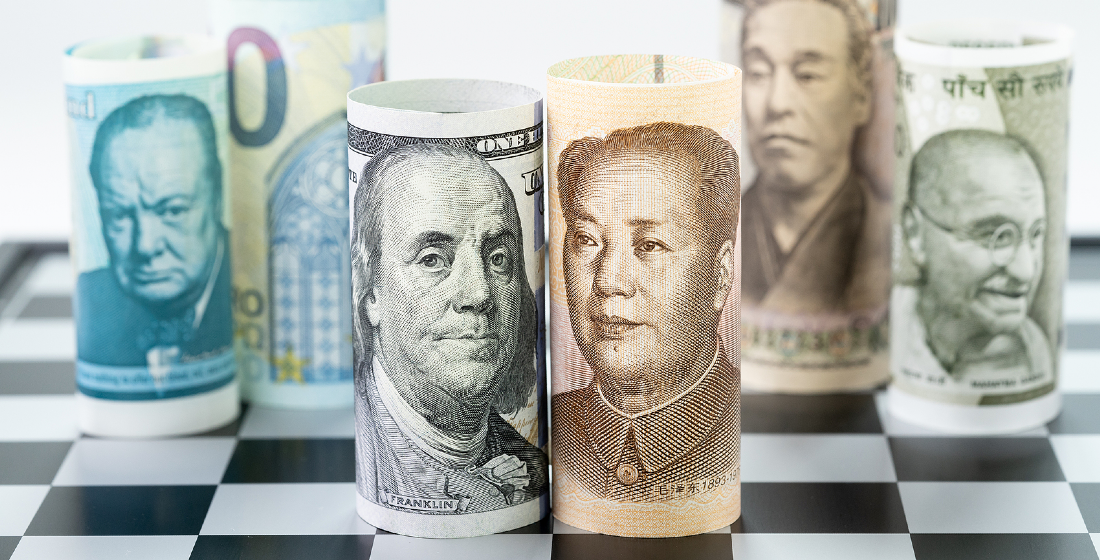Proximo Weekly: Is China losing its infra finance grip?
With a potential focus by China on domestic stimulus via infrastructure, a retreat from the levels of BRI lending seen pre-pandemic and increased Chinese banks lending caution, could there be a niche for international project finance lenders and investors in both China’s domestic infrastructure market and its traditional BRI stomping grounds?

Measures of the efficacy and size of China’s Belt and Road Initiative (BRI), and its impact on global infrastructure development, are often more experience-based than substantiated fact. A lack of transparency makes Chinese development lending and investment very difficult to evaluate. But a recent research report published by AidData, and a joint presentation at Natixis Infraday this week – by Alicia Garcia Herrera, Natixis’ chief economist for Asia Pacific, and Emanuel Gillet-Lagarde, head of real assets and global trade, Asia Pacific – both offer some surprising insights into Chinese domestic and international infrastructure investment and funding post-pandemic.
Expectation was that given Asia, particularly China, was first hit by Covid it would also be the first out and economic rebound would be much faster than the rest of the world. According to Herrera that is not the case. Vaccinations have been much slower and more haphazard than Europe for example, and cross-border lockdowns have significantly hampered both a Chinese and regional economic resurgence.
Herrera also notes that recent economic signals point to China having entered cyclical deceleration – GDP growth peaked in Q1 this year but has continued downwards ever since – albeit from a previously very high growth rate. China is also facing a power capacity crunch, having relied heavily on coal-fired power in the past, the combination of new emissions targets, a ban on Australian coal imports and rising coal prices, combined with a subsidised electricity system, mean that power is being rationed rather than the feedstock cost increase being passed on to the customer, leaving Chinese manufacturing unable to up production. All this points to what Herrera expects to be a revolution in the grid and a potential silver lining for Chinese infrastructure development.
Concurrent with that, real estate, one of China’s major traditional domestic growth drivers, is bloated and over-leveraged (the well-publicised problems at Evergrande are not the only example) and no longer a fixed asset investment option as a catalyst for post-pandemic economic growth. That leaves infrastructure, which as Herrera notes, is the second largest Chinese fixed asset investment sector and will likely be the focus of stimulus in the coming year. “We are going to see local governments issuing more infra-related bonds to finance and infra-led stimulus”. Cuts to China’s bank reserve requirement ratio (RRR) are also expected, in a bid to boost liquidity.
With China on the back foot and potentially focusing on domestic infrastructure, what does that mean for BRI funding? Probably more contraction. According to Herrera, from research done by Natixis, “it is crystal clear China has been investing less in the world,” and that is on both the debt and equity side. “If you actually look at China’s funding of infrastructure globally, there has been a huge reduction.”
In conjunction with that reduction, “in many countries Chinese investment has become controversial or less welcome,” says Gillet-Lagarde. “At the same time China is becoming more selective about what it invests in – but it is still investing, particularly in transition/renewables, a sector in which it is very welcome.”
So will China’s retreat from past levels of global investment create opportunities for international commercial lenders and DFIs? And will China’s predicted focus on domestic infrastructure be opened up to the international lending market or simply financed via domestic bank balance sheets?
The answers are not straightforward. “Chinese banks have become more aware of risk during the pandemic. Look at the G20 debt initiative (DSSI), only one Chinese policy bank – Chexim – has embarked, delaying payments up to 20 December 2031. What’s going to happen with Chinese banks that have been burnt or nearly burnt? They are, of course, going to be much more cautious,” says Herrera. “At the same time Chinese banks have been hit by defaults at home, not just real estate but even in sectors like semi-conductors and coal mining. So Chinese banks realise their long performing ratio is very low and they will be extremely cautious to stretch their balance sheet.”
The AidData report highlights just how much hidden exposure Chinese lenders have under the BRI programme. The report indicates that 42 countries now have levels of public debt exposure to China over 10% of their GDPs. Those debts are also systematically underreported to the World Bank’s Debtor Reporting System (DRS) because, in most cases, central governments in developing countries are not the primary borrowers responsible for repaying the loans. The average annual underreporting of repayment liabilities to China was $13 billion before BRI but has risen to $40 billion since, with the average government underreporting its repayment obligations to China by an amount equivalent to 5.8% of its GDP. Given many of these countries have been hit hard by the pandemic, and that Chinese banks are almost certainly aware of their real levels of exposure, considerably more caution seems the most likely course of Chinese bank action going forward.
The retreat by China from BRI lending will leave a development finance hole. Despite Chinese development debt being expensive – the AidData report notes that a standard Chinese loan has a 4.2% interest rate and a 10-year repayment period, compared to the 1.1% over 28 years of OECD-DAC lenders like Germany, France or Japan – and many Chinese bankrolled projects having been mothballed for overpricing, China has been outspending the US and other major powers on development finance by a factor of more than 2-to-1 every year under the BRI programme.
That funding gap could be filled in a variety of ways. In June, G7 countries launched the Build Back Better World Initiative (B3W) specifically to counter China’s strategic influence with the BRI by offering developing countries an alternative for infrastructure development. The EU has also recently announced its Global Gateway Initiative (GGI), another scheme designed to rival BRI.
While there are no certainties here, it does appear that a Chinese retreat from BRI and a domestic stimulus focus on infrastructure, against the backdrop of increasingly nervous Chinese lenders, could mean more opportunity for international commercial infrastructure lenders and investors in both China – particularly in the renewables sector – and the developing markets that have been the focus of BRI. Some piggybacking off of the B3W and GGI schemes – for those projects where it is economically viable – is a probable outcome. But there is also the strongest chance to date, since international project lenders first started talking up China potential all those years ago, of the domestic Chinese infrastructure market actually delivering some significant business, particularly in renewables. At the very least it’s worth digging out some of those dusty China expansion plans.
Selected news articles from Proximo last week
NORTH AMERICA
30th Street Station: Amtrak goes PPP in Philly
Amtrak’s concession for the redevelopment of Philadelphia’s iconic 30th Street Station is a first for PPP in US rail.
EUROPE
Pedemontana Lombarda financing closed
Sponsors Regione Lombardia (53.8%), Milano Serravalle-Milano Tangenziali (36.7%) and Intensa Sanpaolo (9.6%) have raised €1.74 billion of funding to finance construction of stretches B2 and C of the Pedemontana Lombarda toll road, which will be built just north of Milan, Italy.
ASIA-PACIFIC
Uzbekneftegaz signs €1.1bn ECA-backed deals for Shurtan expansion
Uzbekneftegaz has signed ECA-backed financing deals worth a total of €1.1 billion to fund the expansion of the Shurtan Gas Chemical Complex's production capacity.
MIDDLE EAST & AFRICA
Final bidder deadline announced for Qatar's Facility E
Qatar’s General Electricity and Water Corporation, Kahramaa, has announced a third extension for bidders to tender for the $3 billion Facility E independent water and power project – November 15 is the new deadline.
SOUTH AMERICA
Further details emerge on CEOG financing
Further details have surfaced on the project financing of the West Guiana Power Plant (CEOG) in French Guiana.
The Proximo Membership
Join a brand new community of project finance professionals getting unrivalled access to unique analysis, market data and a global portfolio of expert industry events in the energy and infrastructure space. Click here to find out more





